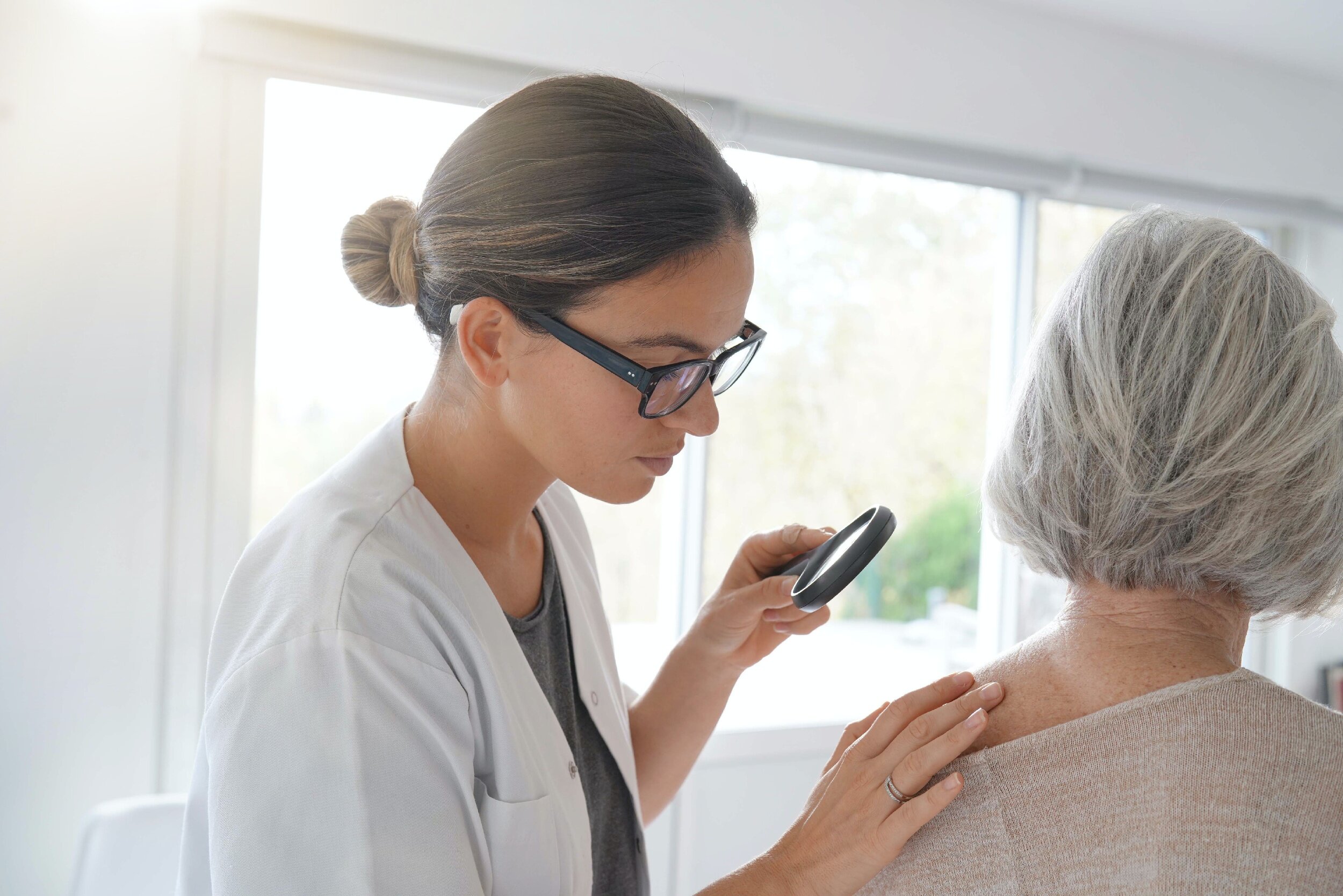
Skin Cancer
What we do
Like all good dermatologists and skin specialists in Australia, we use dermoscope to evaluate pigmented lesions in order to distinguish malignant skin lesions, such as melanoma and pigmented basal cell carcinoma, from benign melanocytic naevi and seborrhoeic keratoses. We rely on thorough examination with a dermatoscope and years of experience to diagnose our findings.
Skin cancer is the most common form of cancer in Australia. While most skin cancers are found on the face, head, back and upper limbs, they can appear on any part of the body. The primary cause of skin cancer is UV radiation from the sun, but also from the tanning booths.
Anyone can get skin cancer, especially if you have:
Fair skin and freckles easily
Light-coloured red hair and eyes
A large number of moles
Family history of skin cancer
Previous history of blistering sunburn
Spent a lot of time outdoors
Minimising excessive sun exposure, especially in the young, by avoiding the hottest part of the day when the UV radiation is at its highest, using sunscreens, protective clothing and moisturisers, will minimise damage while providing adequate vitamin D.
Types of skin cancer
Basal Cell Carcinoma (BCC)
It is the most common type of skin cancer by far, but also the least dangerous. It grows slowly and rarely spreads. Though BCC is seldom life-threatening, if left untreated it can grow deep beneath the skin and into the underlying tissue and bone, causing serious damage (particularly if it's located near the eye).
Squamous Cell Carcinoma (SCC)
It is the next most common kind of skin cancer, frequently appearing on the lips, face, or ears. It sometimes spreads to distant sites, including lymph nodes and internal organs. It can become life threatening if it's not treated.
Malignant Melanoma
It is the least common, but the most dangerous type of skin cancer. If discovered early enough, it can be completely cured. If it's not treated quickly, however, malignant melanoma may spread throughout the body and is often deadly.
Types of surgery
Cryotherapy
This involves spraying liquid nitrogen onto the skin. The aim is to freeze and destroy the tissue.
Curettage & Electrodesiccation
This involves scraping away skin tissue with a curette, followed by cauterising the wound with an electrosurgical diathermy to kill any remaining cancer cells.
Biopsy
A sample of skin tissue is removed, processed, and examined under a microscope by looking at the structure of the skin after the cells have been stained with special coloured dyes.
Excision
Excision is made with a scalpel and the wound is usually stitched after.
For more information, explore these great resources:
Meet our Skin Dr-
Dr Arun Bojarajan
Dr Arun is an experienced General Practitioner with special interest in skin cancer medicine. His extensive experience, diverse skill set, and unwavering commitment to patient care blends him into a very reliable Skin Doctor.

